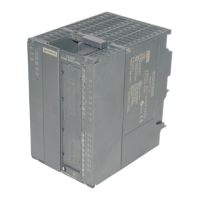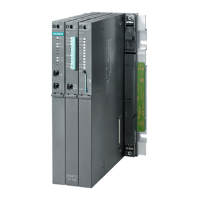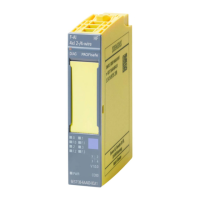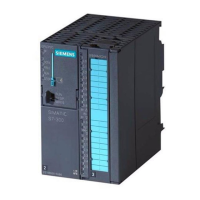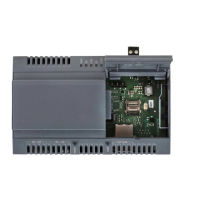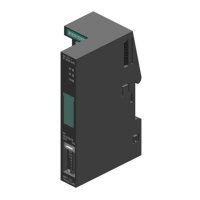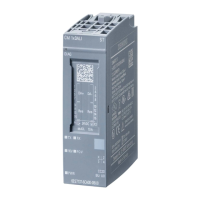Programming the Technological Functions
6-59
FM 353 Stepper Drive Positioning Module
6ES7 353-1AH01-8BG0
Example 1
Open the example project. The block used for this example is FC 101.
The signals are in “DBEX”. The signals relevant for Example 1 only are in structure
“EX1”.
The Drive Enable and the Controller Enable for the axis are set in “DBEX” (OB
100: DRV_EN = TRUE, SERVO_EN = TRUE) and are transferred to the interface
(AW_DB) in Example 1.
In order for the example to function, you must first set either “Jog” mode (mode
code 01) or “Reference point approach” mode (mode code 03) in byte MODE_IN of
the “DBEX”. The respective mode checkback signal is flagged in byte
MODE_OUT.
The traversing movements are shown in bits “GO_M” = TRUE (traverse -axis 1) or
“GO_P” = TRUE (traverse + axis 1).
“Jog” mode active:
Once a mode has become active, the Write request “VLEV_EN” (AW-DB, transfer
speed level 1, 2) is executed once. If you want to transfer it again, you must either
reset the “VLEV_D” bit (status/checkback signal from the request) or set the
“JOBRESET” (reset status/error) in DB_FM.
If you set bit “DIR_M” (minus direction) or bit “DIR_P” (plus direction) to TRUE in
“DBEX”, the axis is moved in either a negative or positive direction.
“Reference point approach” mode active:
When you set the “START” bit to TRUE, the axis is moved in a negative or positive
direction (depending on the machine data initialization) until the reference point is
located. If the reference point approach was successful, the axis is synchronized
(SYNC=TRUE).
If an operator or traverse error occurred, this is flagged by bit “OT_ERR” = TRUE.
An error can be acknowledged by setting bit “OT_ERR_A” to TRUE.
Note:
Variable table 1, which contains all the relevant signals for monitoring and control-
ling Example 1 (“control and monitor variable” tool), is located in the “Blocks” direc-
tory.
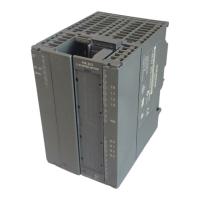
